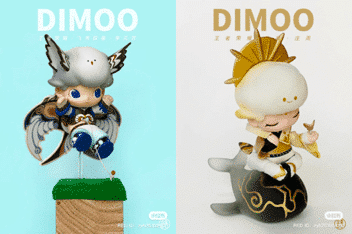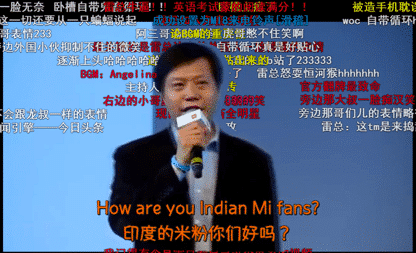When mentioning Key Opinion Leader (KOL) marketing, the first thing that many brands and agencies would think of is KOL promotion of their products. But effective KOL marketing is much more than a one-time effect. Brands can go further by guiding KOLs to post content that will encourage followers to create user-generated content (UGC).
An ample platform for such content is the Chinese Social Media platform Bilibili. Most of its users are Millennials and Gen-Z. They are a creative and bold group raised in the age of the internet, an environment that encourages individuals to speak freely and showcase their personalities as well as personal lives online.
Because of Bilibili users’ strong sense of community, if the quality of user-generated content is good enough, it will be spread quickly. This helps brands to reach more potential consumers, and such content can also be served as brands’ inspiration pool for their product development.
What are other benefits that user-generated content brings for brands? And why is Bilibili a suitable platform for brands to appeal for such content?
In this article you’ll learn…
How does user-generated content benefit brands
Reaching more potential consumers
If brand collaborations and marketing efforts with KOLs stopped at just a single campaign, the amount of people it could reach would be confined within a certain number, which is the amount of KOL followers.
With the spread of UGC or re-creation content, brands are getting more exposure and expanding awareness.
The most recent example is a Chinese tea house brand called Honey Snow City (蜜雪冰城). Founded in 1998, the brand, known for its low cost drinks, were particular popular in lower income areas. But, for the first time a whole new scope of high earning people from other parts of towns took notice - why? Thanks to its viral song.

It is a jingle from 2019 which resurfaced thanks to a KOL and it went viral. The song has become so popular that people joke that no one can say “你爱我,我爱你,蜜雪冰城甜蜜蜜” (I love you, you love me, MIXUE ice cream & tea) without embracing the melody of the song.
On Bilibili, many users are recreating it. For example, translating it into more languages, adding elements to the video such as changing the adorable snowman into a devil, or redesigning the video into an ancient Chinese style. If you open your danmu (a slang term on Bilibili, referring to instant comments) while watching, you can barely see the content of videos as there are too many comments and engagement blocking the video. Inspired by Bilibili’s users, many users on Douyin are also creating UGC for the song.

Inspiring product development
User-generated content on Bilibili can also serve as inspiration for brands’ product development process, acting as a brainstorm session. Chinese blind box company POPMART is leveraging its UGC to create more appealing toys for its consumers.
People’s love towards the brand didn’t stop at buying its iconic blind boxes, there is now a group who are devoted to DIY-ing those toys. They wash out the original design of toys and repaint them or add new accessories and post the final product on Social Media.
On Bilibili, users’ are showing their creativity by demonstrating how to make use of the packaging box, creating homes for those toys, and some are changing the toy design to make them look entirely different.
Yan Wuhao (言吾豪) is one of those popular POPMART DIY designers. He has signed with a Multi-Channel Network (MCN) called Paqu (葩趣), which belongs to POPMART. Yan says it is a good thing for the DIY industry to develop as it will push POPMART’s own designers to work harder and gives them different angles and inspiration.

Creating an approachable brand image
At the beginning of 2021, Louis Vuitton’s inflatable vest went viral. A key reason why people enthusiastically created content based on it is that fact that, the inflatable vest seems ordinary and something that people can easily get for free in as protective material in delivered parcels.
Some people bought it and tested whether the vest can float, and others jokingly DIY made their own vest and put Louis Vuitton's logo on it. Man yin the chinese market uploaded these videos or images on Social Media and mocked those who spent a lot of money to buy the luxury brand vest.

This UGC around Louis Vuitton helped the brand to reach more potential consumers, such as those who didn't have the chance to visit their luxury stores, but thanks to all the UGC, the brand's products are now something that many can relate to in their everyday life.
Why is Bilibili a great platform for UGC?
Bilibili’s users like to showcase themselves
Though Bilibili is gradually transforming itself from heavily focusing on animation, comics, and games (ACG), to becoming China’s own YouTube, the majority of its younger userbase are still big fans of ACG. According to Bilibili’s Q4 financial report in 2020, 86.7% of its monthly active users (MAU) are aged under 35, and the average age of its users is 21 years old. Being young and bold, Bilibili users dare to express themselves and are happy to share their creations on Social Media, resulting in a range of viral content that resonates.
How can brands encourage UGC on Bilibili?
A year ago, brands were flocking to Bilibili to open their own accounts aiming to reach more young consumers. However, not everyone got what they expected. Among those accounts, Chinese mobile phone brand Xiao Mi (小米) is one of the successful examples. It has 1.62 million followers and the average views of its videos are between 40k - 60k. For the majority of brands’ Bilibili accounts, their average views are only around several thousand.
Since not every brand is suitable to open Bilibili’s accounts, the best option for brands to promote themselves on Bilibili is to work with KOLs, and guide followers to create user-generated content based on it to boost exposure.
Video content is very powerful on the platform, and so to trigger viewers’ desire to create content based on a video, the content must have something to inspire them.
For example, Xiao Mi. Founder of Xiao Mi Lei Jun (雷军) once attended a launching event of the brand in India. But he wasn’t able to speak fluent English, so the most frequent sentences he said were “are you okay” and “thank you”.
Bilibili’s users started mocking the CEO by combining his words into a song called Are You Okay?. With the repetitive melody and simple lyrics, the song quickly became viral.

It doesn't always have to be comical, but brands can help KOLs to think of viral phrases. These phrases can either be brand new or old ones but being said by the KOL in a different way, can trigger viral re-creation videos.
Again, take Xiao Mi’s case as an example. After Lei Jun’s song went viral, Xiao Mi appropriately leverages it by having the song show up in his Bilibili videos. When Lei was invited to a TV show appearance, the brand used the same way of editing to present a clip that showed Lei mentioning the song on the show. Such content will encourage other users to show their creativity and create similar videos.
However, it should be noted that sometimes UGC may not be good for a brand’s image. When it comes to cases like this, brands need to decide whether the content will truly harm the brand or if the content can be turned into something that can serve for brands’ promotion.
Guide viewers to post in danmu
Danmu or instant comments is a form of user-generated content, and although many platforms have introduced this function, Bilibili is still the big boss and the most active video platform that users post instant comments on. Many viral phrases on the Internet such as Qianfang Gaoneng (前方高能, meaning "heads up"), and Lao Sijing (老司机, a way to say someone is especially good at something) were learned by the public through danmu. Brands can also post on danmu on their own to boost the discussion.
Brands must maximize every opportunity possible to generate the biggest ROI for their KOL marketing efforts, and guiding KOLs to create videos that can evoke discussions or resonate with viewers is a great start.
Using our Discover platform you can track your media mentions across many platforms such as Bilibili, and well as Weibo, TikTok, RED (Xiaohongshu), WeChat, and Douyin. Check it out below!

